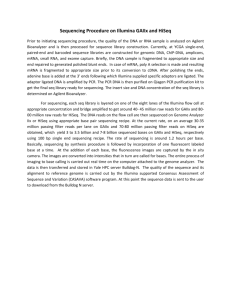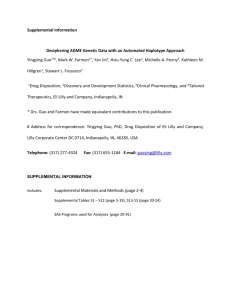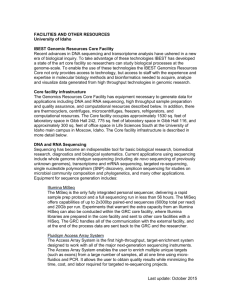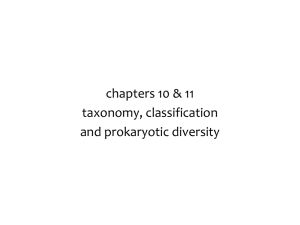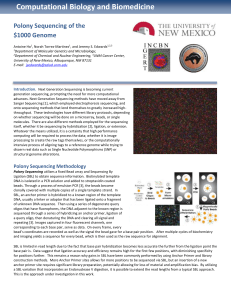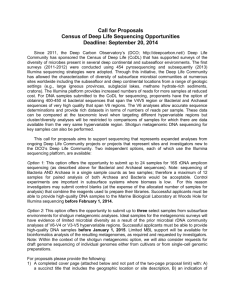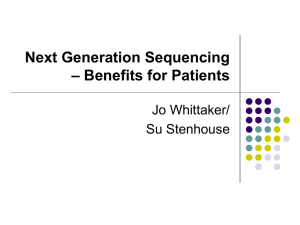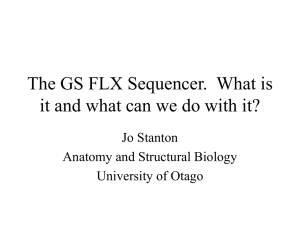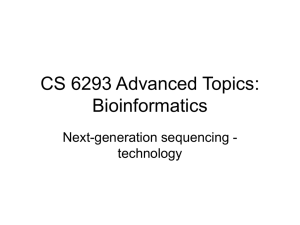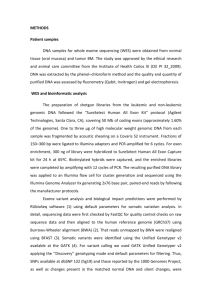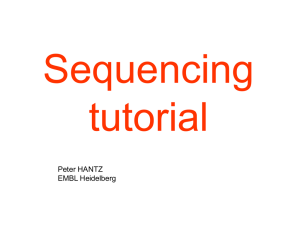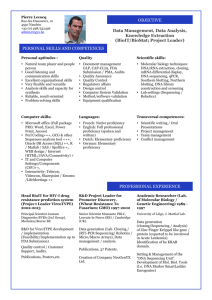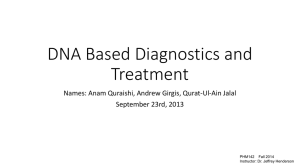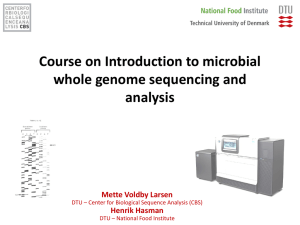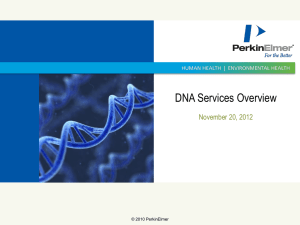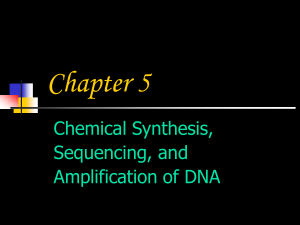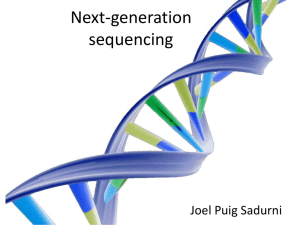ULTRASECUENCIACIÓN: métodos y aplicacione
advertisement
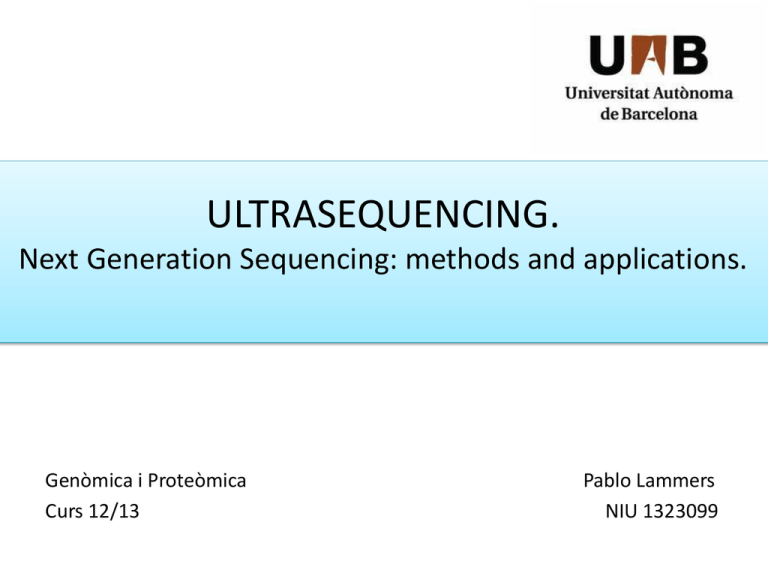
ULTRASEQUENCING. Next Generation Sequencing: methods and applications. Genòmica i Proteòmica Curs 12/13 Pablo Lammers NIU 1323099 Sanger sequencing - Since 1975. Frederick Sanger Human Genome Project New necessities 1 sample -> 1 read -> 3 to 9€ 1 read -> 1 kbp (max.) 1 run -> 16/48/96 samples Next Generation Sequencing Libraries preparation Amplification DNA Sonication Fragmentation Physical methods Chemical methods Adapters ligation Sequencing reaction 1 run -> 1000 € 1 read -> 100 to 400 bp 1 run -> >100 M reads 1 run -> 24 small genomes NGS platforms 454 Roche – GS Junior Applied Biosystems: SOLiD Illumina - MiSeq Invitrogen – Ion Torrent Pacific Biosciences – PacBio RS II 454 (Roche) 1. One fragment = One bead 2. emPCR: Emulsion PCR amplification 3. Sequencing: One bead = One read 4. Pyrosequencing 1 M reads/run Read lenght: 250-500 bp Library construction DNA captured bead containing millions of copies of a single clonally amplified fragment emPCR PTP loading Applied Biosystems: SOLiD 1. Amplification by emPCR 2. Hybridization to beads. Beads covalently attached to glass slide. 3. Ligation Based Sequencing with Di-Base probes (fluorescently labeled with 4 dyes) 4. Image capture (fluorophore) 100-500 M reads/run Read lenght: 50-100 bp Illumina Sequencing by synthesis 1. Library preparation 2. Clusters generation 3. Sequencing DNA fragmentation Adapter oligos ligated Purification Isothermal bridge amplification 100 M reads/run Read lenght: 80-250 bp Ion Torrent wells -> chemical info from DNA seq -> into digital info (basecalls) DNA fragmented Attached to beads Each bead in a well one of the 4 nucleotides Nucleotide incorporated to a single DNA strain ion H released pH chemichal changes -> into voltage • each 15 sec -> wash and repeat (different nucleotide) 10 M – 1 G reads/run Read lenght: 200-400 bp Pacific Biosystems (PACBIO) • Amplification not required • SMRT: Single Molecule Real Time seq • ZMW: Zero-mode waveguide DNA template-polymerase complex -> immobilized at the bottom of the ZMW Read lenght: 4 kbp Maximum: 23 kbp Each nucleotide labeled with a different colored fluorosphore Phospholinked nucleotides -> introduced into the ZMW chamber Base held -> light pulse produced Applications •Cancer research •Population genomics studies •Metagenomics •RNA-seq •Comparative genomics •Disease association studies •Species clasification •Forensics Bibliography • Michael A Quail et al. 2012. A tale of three next generation sequencing platforms: comparison of Ion Torrent, Pacific Biosciences and Illumina MiSeq sequencers. BMC Genomics. 2012; 13:341. Review. • Mardis ER. 2008. Next-generation DNA sequencing methods. Annu Rev Genomics Hum Genet. 2008;9:387-402. Review. • Schuster 2008. Next-generation sequencing transforms today’s biology. Nature Methods - 5, 16 - 18 (2008). Published online: 19 December 2007; | doi:10.1038/nmeth1156.



